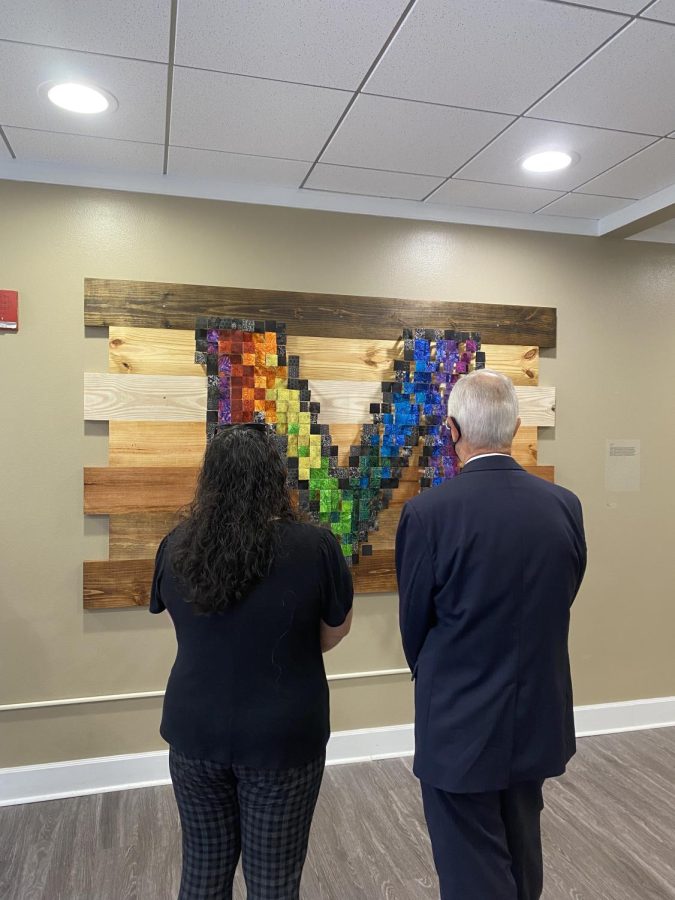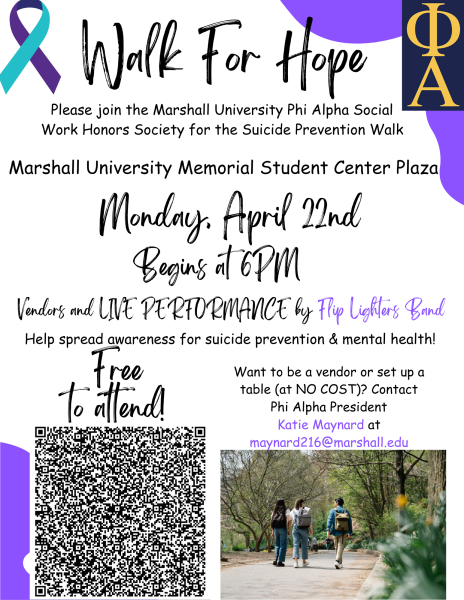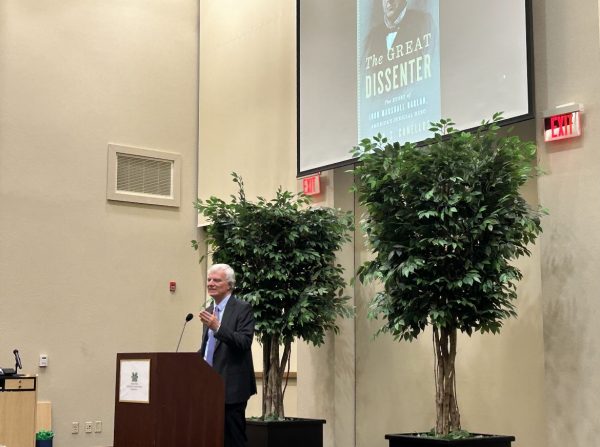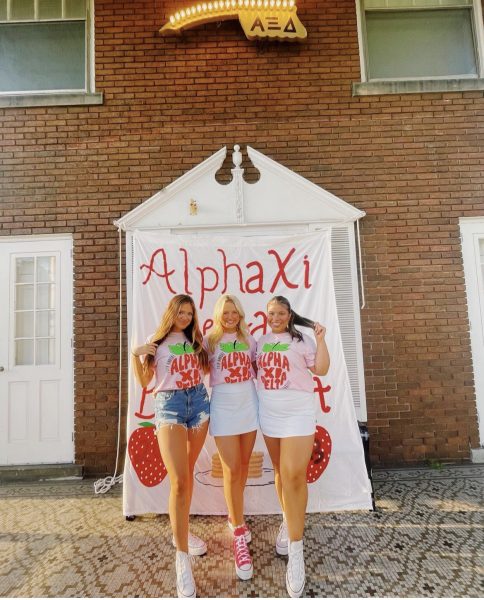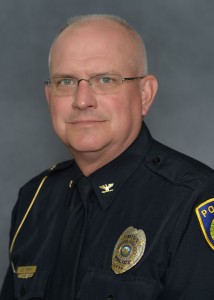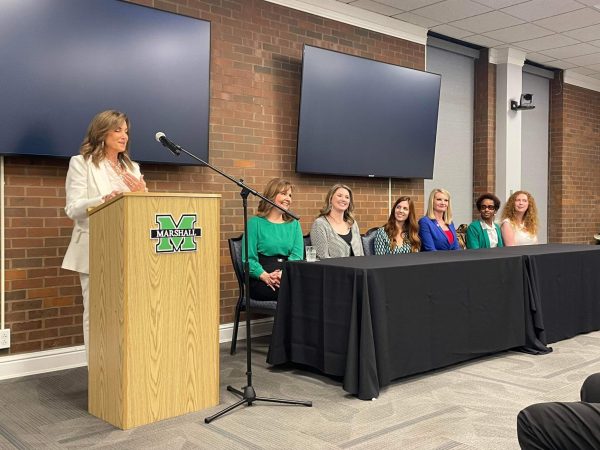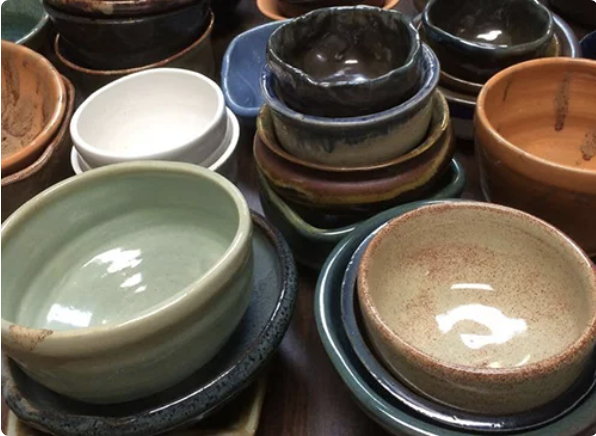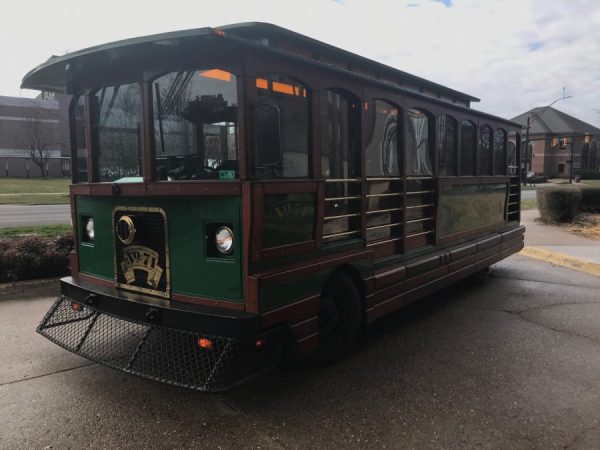President Gilbert Observes Campus Art to Promote Diversity
President Jerome Gilbert toured on Oct. 7 around campus to talk with the winners of the Diversity, Equity, and Belonging Artist Competition.
The tour showcased the artists’ pieces and allowed the winners to explain their art and discuss the importance of diversity and inclusion at Marshall University.
The tour started in Smith Hall’s Atrium with Karen Fry’s piece, “In Toto.”
Fry, an alumna of Marshall, used varying shades of wood as the background of her piece, and colorful pieces of batik swatches placed at varying levels off the board to create a large “M.”
Fry, a member of the AAPI community, said she wanted to showcase her pride in Marshall in the form as an M, as she believes the University offers an environment that is, “welcome to all.”
“It is absolutely beautiful,” Gilbert said.
The tour headed to the East Hall next to view alumnus Sean Gue’s pieces: “Lavinia Norman,” “Thomas Dexter Jakes Sr.,” “William Withers Jr.,” “Martin R. Delaney,” “Leon H. Sullivan,” “Christopher H. Payne,” and “Henry Louis Gates Jr”.
The seven pieces are framed, digital abstract portraits of leading African Americans from West Virginia.
Gue said the task was difficult, as one of his portraits was made in reference to a photo from the 1800s.
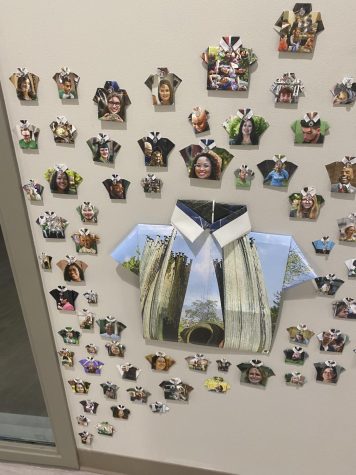
Gue’s portraits contain the individual’s stories behind them, but slightly covered up by their portrait because Gue encourages viewers to, “research it themselves.”
“I just want their voices to be out there,” Gus said.
The next stop on the tour was on Drinko Library’s second and third floors.
On the second floor stood a lifelike bust of Mildred Mitchell-Bateman, surrounded by translucent swirls on the windows behind her.
The artist, a current student at Marshall, Peyton Dolin, stood by the bust as she told the story of her piece.
Mitchell-Bateman, the first African American to lead a state agency in West Virginia, was also director of West Virginia’s Department of Mental Health in the 1970s.
Dolin said every piece of the artwork was hand-sculpted and the bust itself was made hollow for the processing in the kiln. President Gilbert said he was concerned about the bust being broken and mentioned 3-D scanning a copy of the bust to Frederick Bartolovic, associate professor and coordinator of ceramics, who assured Dolin that she could use the scanner to make a copy.
On the third floor of Drinko sat Shyanna Ashcraft’s piece, “Breaking Bread.”
Her piece commemorates the White Pantry Share-in that took place in Huntington in 1963.
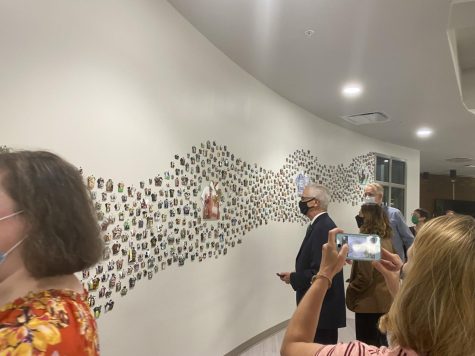
The share-in, similar to a sit-in, took place when ten students at Marshall took a part in a protest at Bailey’s Cafeteria, and later, The White Pantry.
According to the artist’s notes on the wall beside the piece, the sharing of food among the students was to break down the racial barriers that separated them.
They had to fight against, “shattering dishes, lit sulfur cakes, floors mopped with ammonia, unbearable heat…” and more.
The piece shows hanging plates with the names of the protestors, one of them being Professor Philip W. Carter MSW, who is professor of social work at Marshall.
Among the plates are casted white and black hands, clinging to silverware.
Just above the table hangs a clenched black hand, which almost touches the table.
The final stop on the tour was on the second floor of the student center.
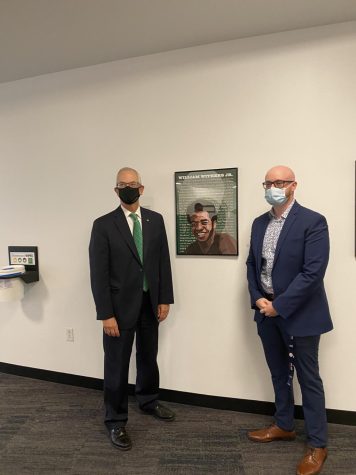
Peyton Dolin and Zahava Erikson created origami shirts made from photos of current and previous Marshall faculty, staff, students, and alumni.
The piece is called “I went to Marshall University and all I got was a t-shirt.”
The piece showcased the diversity of The Herd and showed a common ground for the subjects of the pieces.
The five pieces can still be found in their respective places for viewing and all have artist notes for further information.
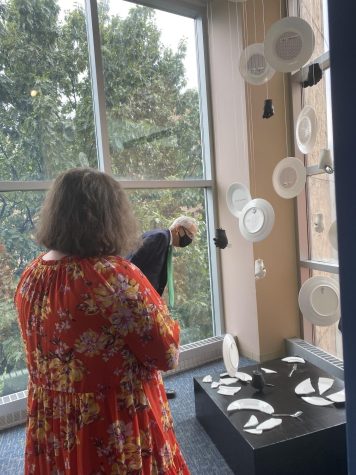
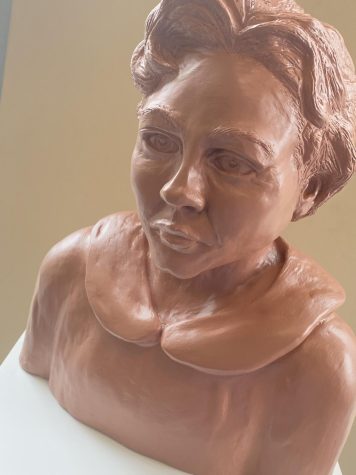
Your donation will help continue the work of independent student journalism at Marshall University. If you benefit from The Parthenon's free content, please consider making a donation.


